1888 words, 9 min read.
Its modus operandi gets as close to Slow Fashion more than we realise.
By Annelise Lecordier
Utter the words Haute Couture within hearing distance of anyone with half an understanding of the fashion industry and you’re bound to bring up the same kinds of associations.
Luxury. Excess. Escapism. Half accurate approximations of French designer names.
Whatever the specifics may be, bottom line is – Haute Couture exists within a bubble of its own.
With one-of-kind handmade designs costing in excess of $100,000, nothing about it seems accessible and, to many, represents the worst excesses of the fashion industry. Something to be enjoyed by out of touch elites that have little concern for conversations on the impacts of the fashion industry. But what if I were to tell you that Haute Couture could actually be the future of #sustainability?
Now hear me out, I know what you’re thinking – surely nothing this outrageously overpriced and wasteful could ever be considered sustainable. But taking a closer look at the practices of the industry might actually reveal that it has more in common with the slow fashion movement than you think.

The House of Fendi. So epic! Photo by Arno Senoner via Unsplash
Oh, the Luxury
Legally speaking, a fashion house can only call itself Haute Couture if it meets the requirements set out by the Fédération de la Haute Couture et de la Mode. These include standards around how many skilled workers must be involved in the creation of a garment, with only a specific number of items being created each season within a made-to-order system. As a result, each garment is meticulously crafted by hand by highly skilled people who are often very well paid for their work, with every detail being painstakingly decided over from conception to final product. The end product in question is a garment that is made to last – so much so that many often end up in private collections and museums.
By its nature, Haute Couture exists outside of fast fashion’s built-in obsolescence. Couturiers traditionally produce only two collections a year centred around garments that emphasise timelessness. It embodies an approach to clothing that is diametrically opposed to the fast fashion’s cheap chic aesthetic which instead thrives on fast production cycles, limited durability and a consumer mind-set that embraces disposability in exchange for trend-led designs intended for short-term use.
Don’t get me wrong – producing exorbitantly priced garments not meant for everyday wear for the select few might not pass muster as eco-friendly. But Haute Couture’s practices do resemble what has come to epitomise slow fashion’s approach to sustainability, defined by a similar focus on carefully selected materials, more considered labour practices, smaller production batches and an emphasis on longevity in terms of both design and quality. And lately, Haute Couture has been taking its commitment to sustainability even further, offering a potential roadmap for a more radical rethinking of fashion’s practices.
…Haute Couture’s practices do resemble what has come to epitomise slow fashion’s approach to sustainability, defined by a similar focus on carefully selected materials, more considered labour practices, smaller production batches and an emphasis on longevity in terms of both design and quality.
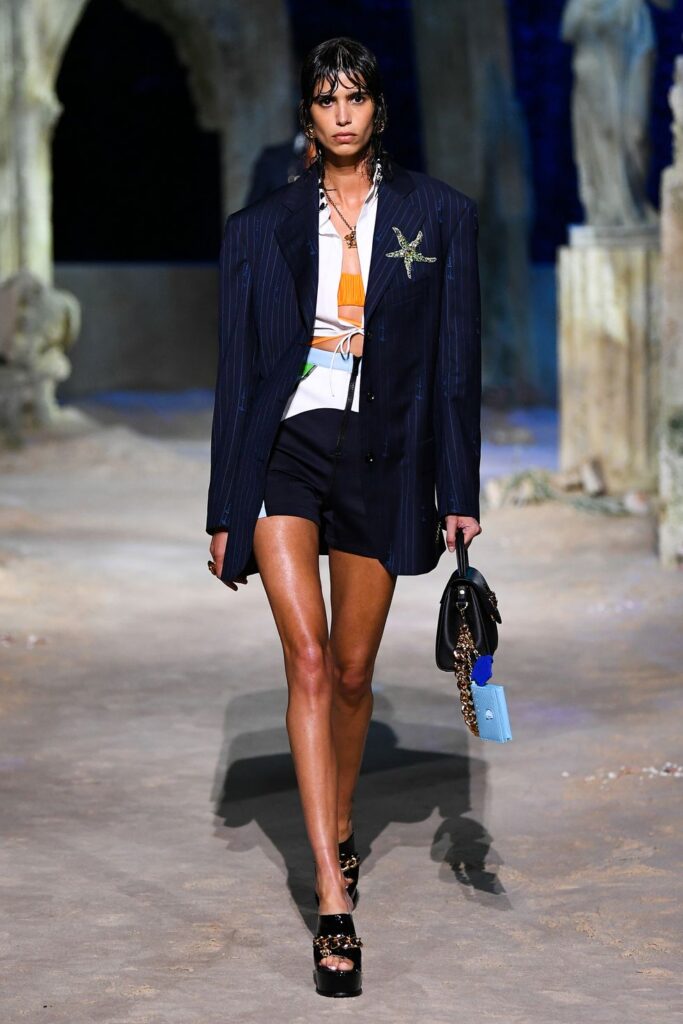
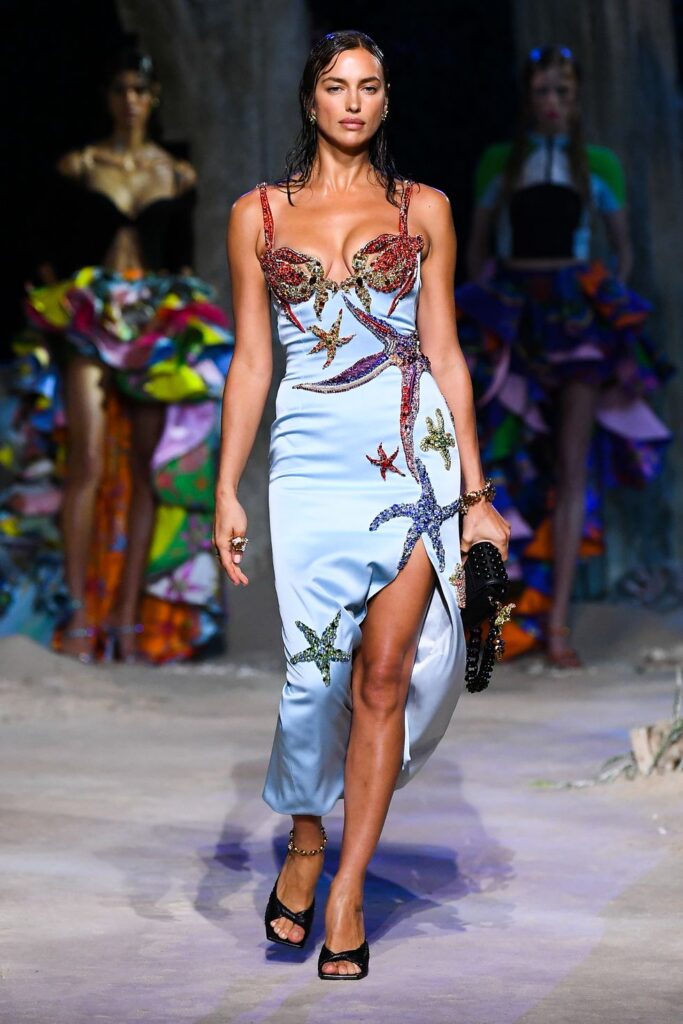
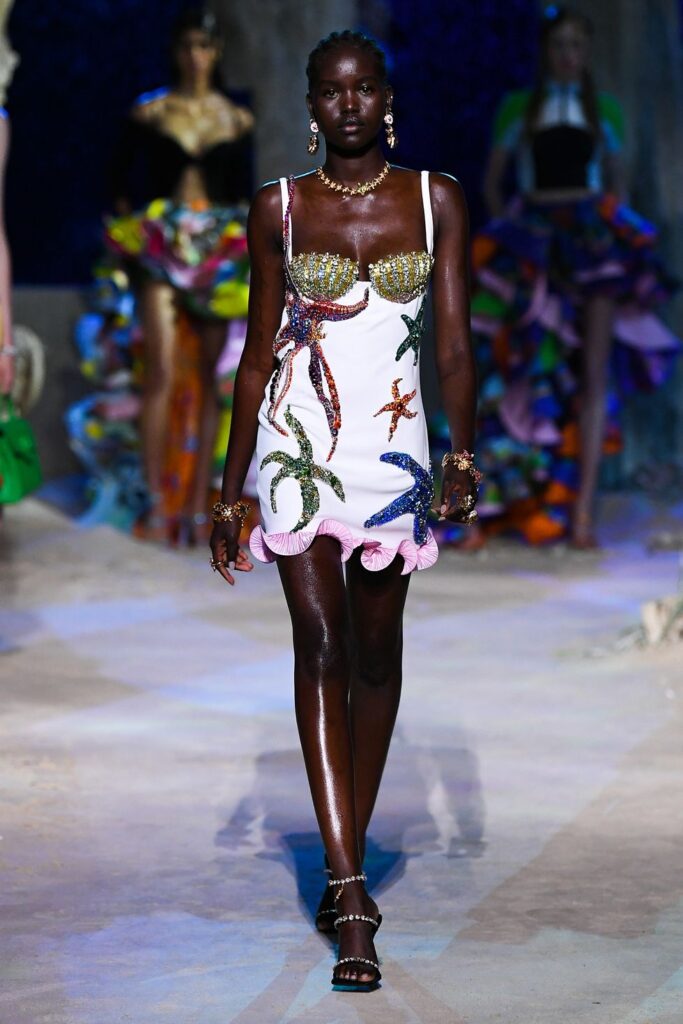
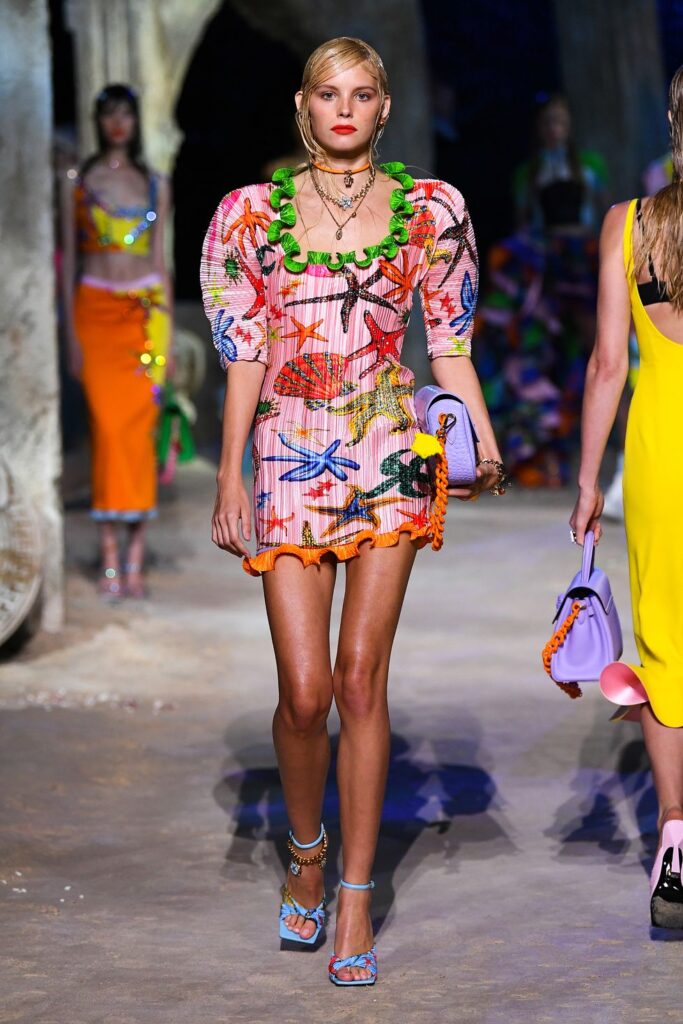
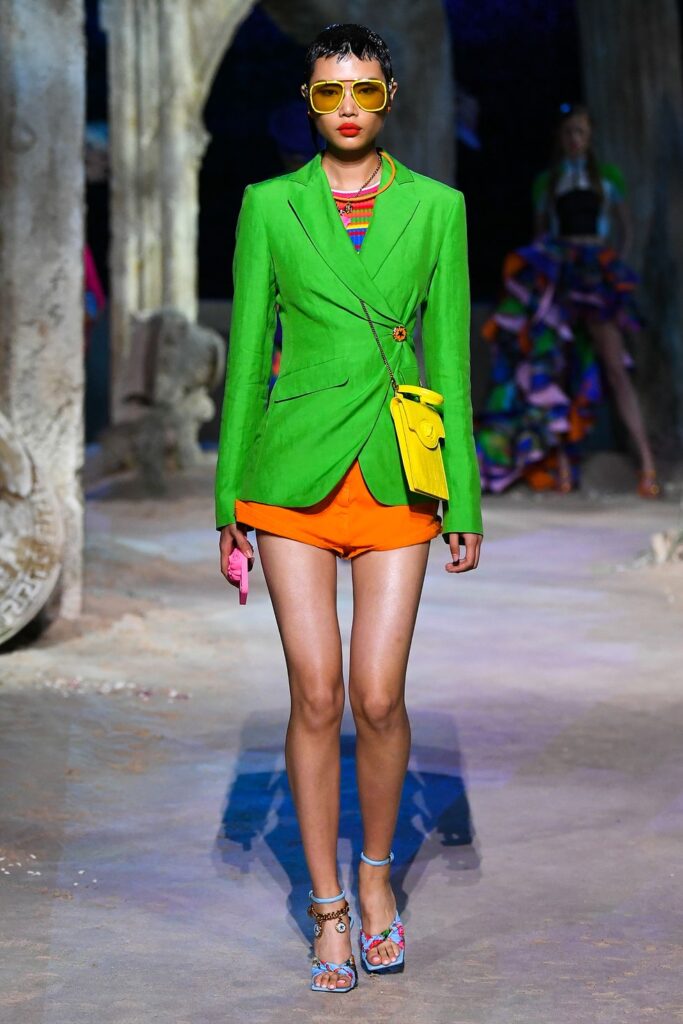
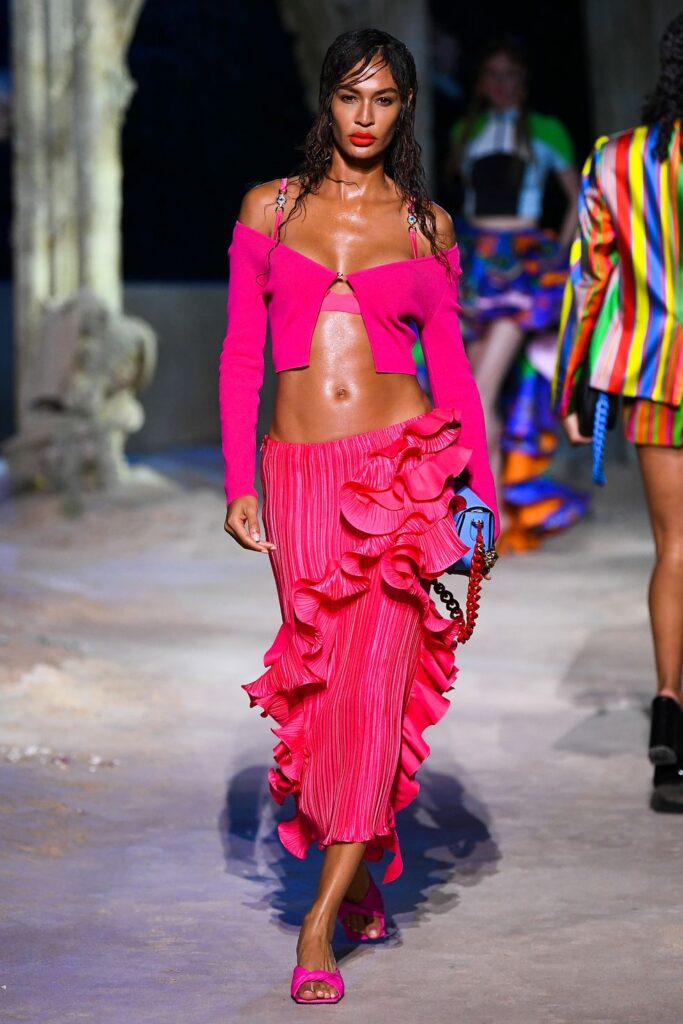
Ready-to-Wear gets inspired
Looking at recent runway shows and various atelier’s adoption of eco-conscious practices, for instance, reveals the role Haute Couture can play in driving this change. Couturiers like Ronald van der Kemp and Iris van Herpen are perfect examples of this. Part of a slew of Amsterdam-based designers – an emerging counter-balancing force to the Paris fashion bubble – van der Kemp and van Herpen’s latest runway creations have centred sustainable practices and technological experimentation in a stated bid to reduce the industry’s environmental impact. A long-time champion of sustainable fashion, 98% of van der Kemp’s collection in 2019 was made from repurposed fabrics and materials collected largely from factory waste and overstock from past collections. This is part of the designer’s larger plan to work with companies in the industry to find more sustainable solutions to their waste problems by using their “leftover [to] produce clothes” instead of the current practices of burning or throwing them away.
Xuan-Thu Nguyen, founder of Paris-based Xuan, is similarly inspired by the possibilities that re-using traditionally discarded materials holds. Her commitment to this was already seen in her Fall/Winter 19/20 collection which was crafted from 90% deadstock. She’s decided to take this practice further through the creation of her new line, 1/Off, which works exclusively with vintage pieces to create upcycled garments. To Nguyen, this focus on upcycling should be a given. “We shouldn’t just throw materials away,” she told Vogue. “It’s still beautiful so why not use it?”
For van Herpen, the excitement lies in finding new ways of developing more eco-conscious fabrics and innovative ways of conceptualising design to increase the versatility of garments. She has collaborated with numerous architects and scientists in the past to do this, looking at how a single garment can take on multiple forms through kinetic designs or using a mix of technology and traditional techniques to work with materials in ways we’ve never seen before. She’s particularly excited by the possibility of octopus-like textures that hold the capacity to change colour and shape.
“It’s [still] further in the future, but [it] creates a lot of possibilities for fashion,” van Herpen told Vogue. “You [could] change the design and colours; customise it.” That creates less need for a lot of clothes; it becomes a whole different philosophy of owning.
This kind of commitment to sustainability is slowly becoming part of every aspect of couture, with Chanel recently announcing their investment in a Boston-based start-up that’s developing an eco-friendly silk technology, building on their previous investment in Finnish biodegradable plastic packaging alternatives. Let’s not kid ourselves, Chanel’s overall business practices leaves a lot to be desired – but this kind of investment into potentially mitigating the impacts of their creations creates a lot of new and interesting possibilities for the industry as a whole. Put quite simply, the fact that sustainability is becoming a bigger part of the conversation for Haute Couture and luxury brands can have positive implications for how the rest of the industry views their supply chain practices. Think of it as that scene from The Devil Wears Prada where Meryl Streep schools Anne Hathaway on the real impact decisions made in their offices can have on her everyday life – in this case, sustainability is cerulean, Meryl Streep is Haute Couture and we’re all Anne Hathaway a few seasons away from having a more sustainable wardrobe.
And we’re seeing this change happening in Couture menswear too, with Zegna’s Spring/Summer 20 show embracing the #UseTheExisting ethos.
As Alessandro Sartori, artistic director of Zegna, put it, “It is our duty as denizens of this world to live responsibly. Everything is connected, and everything conveys the same idea: we do not need to create the new from scratch, but we can reuse and reinvent the existing, getting progressive fabrics out of discarded ones, translating traditional techniques into innovative lifetime tailoring, turning an abandoned place into an area of creation.”
Overall, 20% of the collection was crafted from upcycled material, with suits made entirely from wool remnants and recycled cashmere proving particularly popular. While far from representing an overwhelming commitment to deadstock, the success of this line does bode well for the financial viability of a sustainability-first approach to fashion.
Haute Couture Can Set the Right Trends
Of course, the question remains: is a section of the industry that is so distanced from the average consumer truly in a position to radically change the way fashion as a whole views its relationship with sustainability? Well, the answer lies in the role Haute Couture can play in shifting perceptions of sustainability and its appeal to the everyday consumer.
As Joy et al (2012) have found, one of the biggest barriers to embracing the slow fashion movement for consumers is its lack of overall appeal. To most, the concept of slow fashion brings up images of plain clothing with little stylistic interest. When compared to fast fashion’s constant offering of new, trend-led items that offer the immediate gratification of reinvention with one impulsive swipe of our credit cards, aesthetics always seems to trump ethics. That’s further complicated by the fact that, to most consumers, fast fashion seems to exist outside of their environmental consciousness. As the same study found, young people – the very demographic that most embraces fast fashion – seem to view their consumption habits when it comes to clothing as existing outside of the sustainability conversation, even if they are otherwise open to environmentalism. When combined, these two factors make slow fashion an incredibly hard sell to most. That’s where Haute Couture comes in.
By making sustainability central, the hope is that Haute Couture could set a new path for how the industry functions – all while offering a take on sustainability that might be more appealing to the average consumer.
By publicly making sustainability part of the conversation, couturiers like van Herpen or fellow Amsterdam-based brand Viktor & Rolf can redefine the way we view environmentally- and socially-responsible practices within the industry. Moving away from perceptions of sustainable fashion brands as boring, outdated or having simply no aesthetic vision whatsoever, Haute Couture’s buy-in can extend the positive associations many have for luxury and couture to the slow fashion movement. These ateliers are used to creating desire through innovative designs and can greatly influence consumption practices, making it seem more possible for us to adopt a new way to do fashion – both as consumers and producers.
For van der Kemp, adopting a sustainability-first approach is all about the potential impact this decision might have on broader practices within the industry.
“I also want to show the world that it’s possible to make couture with existing materials, dead stock, high-end leftovers, vintage fabrics and that sustainability can be glamourous, sexy and high-fashion,” he stated to Vogue.
Van Herpen is motivated by a similar rationale. “This is couture; you will not see this in a store next week, but [it’s] the principle behind it. [I have] big hopes that we will be able change the way we think about materials, and the way we produce,” she said to Vogue.
By making sustainability central, the hope is that Haute Couture could set a new path for how the industry functions – all while offering a take on sustainability that might be more appealing to the average consumer.
“Couture in its heyday set the tone in fashion. With my sustainable #couture I want to inspire girls out there to experiment with their wardrobes and with vintage clothes; to teach them to enhance their personalities and be conscious about buying clothes,” van der Kemp told CNN Style.
If nothing else, Haute Couture can serve as an inspiration to us all to step away from the discounted racks and start searching for those few key pieces to be treasured rather than discarded after a season. With its focus on artisanal quality and an appreciation for craftsmanship, looking to couture could serve to give us a new way of looking at garments – and along with it could come a new-found appreciation for custom, hand-made designs. While this might, once more, seem only accessible to the few, people who can make custom clothes are not confined to French ateliers. They exist all over the country and offer a different avenue for our fashion needs based on small-scale production models and carefully constructed items made to last. What better way of injecting a little something special into our everyday? After all, luxury and escapism doesn’t have to only be enjoyed by the few – it all just depends on how you define it.

Annelise is a freelance writer, activist and strategic communications management student currently based in Naarm (present-day Melbourne.) An International Relations graduate originally from Mauritius, she co-founded It’s Not A Compliment – a Melbourne-based campaign against street harassment. She is passionate about human rights, social justice and fighting structural oppression through a strong intersectional, post-colonial feminist lens.
Join us in our Slow Fashion movement with the hashtags #ConscientiousFashionista and #wardrobetruths on Instagram, and follow us at @fashinfidelity.
Tags: #hautecouture #leader #sustainability #circularfashion #circularity #ethicalfashion #sustainablefashion #ecofashion #greenfashion #responsiblefashion #recycledyarn #recycledfabric #recycledcotton #fabricrecycling #recycling #conscientiousfashionista #fastfashion #slowfashion #wardrobetruths #fashioneducation #fashion #fashinfidelity

